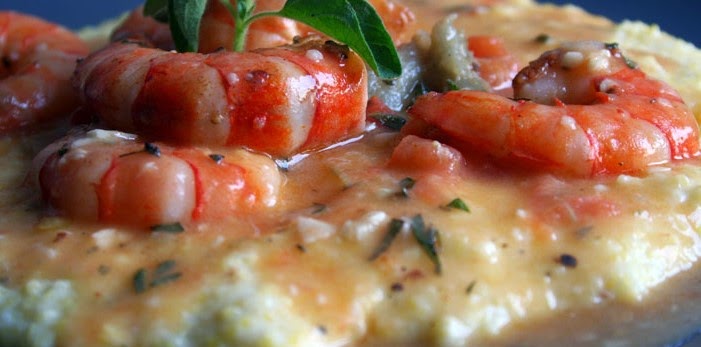Shrimp & Grits is one of the Low Country's signature dishes
I have been in the East
Coast’s “Low Country” for the last week with a Wine-Knows tour. There’s a whole world of flavor packed into
the nearly 100 mile area (known as Low Country) between the cities of
Charleston and Savannah. While I had visited
both destinations recently, this time I hired local foodie experts and chefs to
lead us through a tasting of the best of these two delectable cities. Here are some fascinating details our group
learned about the effect Africa has had on their intriguing regional cuisine.
African slaves had a profound
influence on today’s Low Country gastronomy.
Charleston was ground zero for America’s slave industry---40% of
enslaved Africans brought into this country came through the Charleston Harbor.
While these slaves were sold around the entire
South to supply the plantation industry with cheap labor, many remained in
South Carolina and adjacent Georgia.
Slaves were the cooks on
plantations and in private well-to-do homes.
They also tended their master’s gardens.
As the African climate was similar to that of the Southern colonies,
slaves were well versed in what types of foods grew best in the heat and
humidity. Furthermore, slaves brought
some food items with them that were unknown to the colonists. Peanuts, for example, were brought on slave
ships and became an important staple for slaves. Americans had never seen them and the legumes
weren’t well received. Used as food for
the slaves, the poor and for animals, peanuts were only used by the general
public after the Civil War.
Below are other foods,
synonymous with today’s Southern cuisine, that have slave roots:
~ Black-eyed peas: widely
used in Africa, these legumes were brought on ships with slaves. Thriving in intense heat and requiring little
water, they adapted beautifully to the South’s climate.
Black-eyed pea salad made during our cooking class at
the Forsyth Mansion
~ Greens: A variety of wild
greens were prevalent in Africa where they were cooked with meat. American slaves had meager rations of food
and often had to make the most of discards…or turn to wild greens (e.g.
collards). Beets and turnips were grown
in most gardens but their greens were thrown away. Thus, the invention of one of the South’s
greatest dishes.
~ Grits: While grits are pure
American (made from dried corn), it is very similar to an African dish that is
dried and ground.
~ Gumbo: Gumbo is a slave word
for “okra” (which is native to Africa).
~ Rice: Evidence indicates that Africans have
grown rice since 1500 BC. Slaves were
often stolen from African rice fields to be sold in America where their skills
of water management, soil and milling techniques were invaluable to the
colonists. The Low Country’s tidal flow
with islands and inlets were perfect of rice growing. So perfect, in fact, that South Carolina’s
economy was second only to Massachusetts prior to the Civil War.
An ethereal pudding made from “Carolina Gold” rice
~ Yams: These important vegetables were used on slave ships to
provide sustenance for the arduous voyage at sea.
~ Watermelon: Ancient Egyptian tomb paintings show that this fruit has been cultivated since
prehistoric times. Native to Africa,
watermelon was used as a source of water in the dessert. Slaves planted them in the New World to
survive the South’s intense heat during summers.
~ BBQ: Last but not least, tantamount to modern day
“soul food” is BBQ. Slaves brought with
them the African tradition of roasting a variety of meats over wood, and then
serving them with a thick dipping sauce.



No comments:
Post a Comment